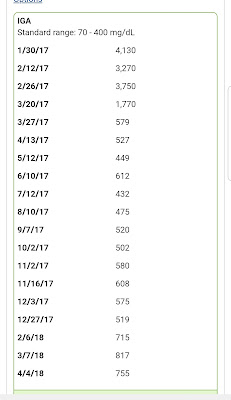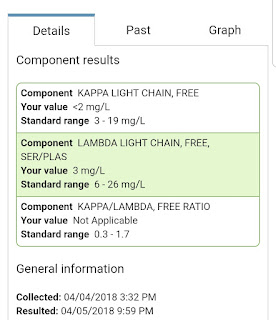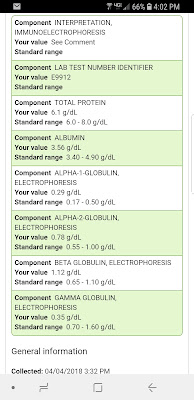Hello Everyone-
I'm alive! But still in the process of surviving this awful sinus crud that attacked me. The 40mg Dex-steroids from Monday have worn off, so I feel super blah, lousy, clogged, tired, weak, headachy, ouchy, and full of crud still. If you haven't read my previous 4.14.18 post, (I just had to sneak in between the 8's), please do. Gives you detail about what my "body of betrayal" has been putting me through recently. I'm still thinking about how "stupid" I was to break all my antibacterial protective rules for my daughter's birthday weekend. Everyone says "it was so worth it Julie"... hhmmm me... not so sure :((
1- don't go to dance clubs/bars with masses of people when you are Neutropenic!
2- don't go to restaurants, chancing massive cross contamination, when you are Neutropenic!
3- don't go out in crowded places when your WBCs are barely 2.0, and your ANC is .81
4- don't assume Zarxio Neupogen shots will magically make you "normal" and strong enough to battle off invasive cooties Julie.
4- don't pretend to forget myeloma's enormous impact on your life Julie, myeloma owns you.
5- don't let your guard down again, you know the outcome. Your immune system is NOT normal and will Never be normal Julie. Accept. Accept. Accept...
Yes, I go for so long not taking chances, then I do... and boom, reality slams me, and I'm a sickie.
Ok, I feel yucky, so today's update is short and sweet. Thank you to all my invisible virtual readers for your interest in my crazy life story! Hoping your life is flowing smoothly, happily, rewarding and with as little drama as possible. I will never understand why things happen as they do... we don't always have a choice in what happens to us, but we have a choice in how we handle all our challenges... I choose to be as happy, grateful, analytical, and forward thinking as I can, when I can. Feeling awful definitely challenges me, and I can get really frustrated and hopeless, but when the fog clears, I'm back to my fighting spirit.







Can't you wear a suit like the "boy in a bubble"? Then you can come visit our new home in Reno!
ReplyDeletehahahaaa JD!! Yes, I need one!! Would love nothing more then to visit you and Jana!! I'll put it on the Bucket List, and look for my HazMat, Bubble suit asap! Sending you both love and hugs always and forever! xoxo
DeleteVery nice postt
ReplyDelete